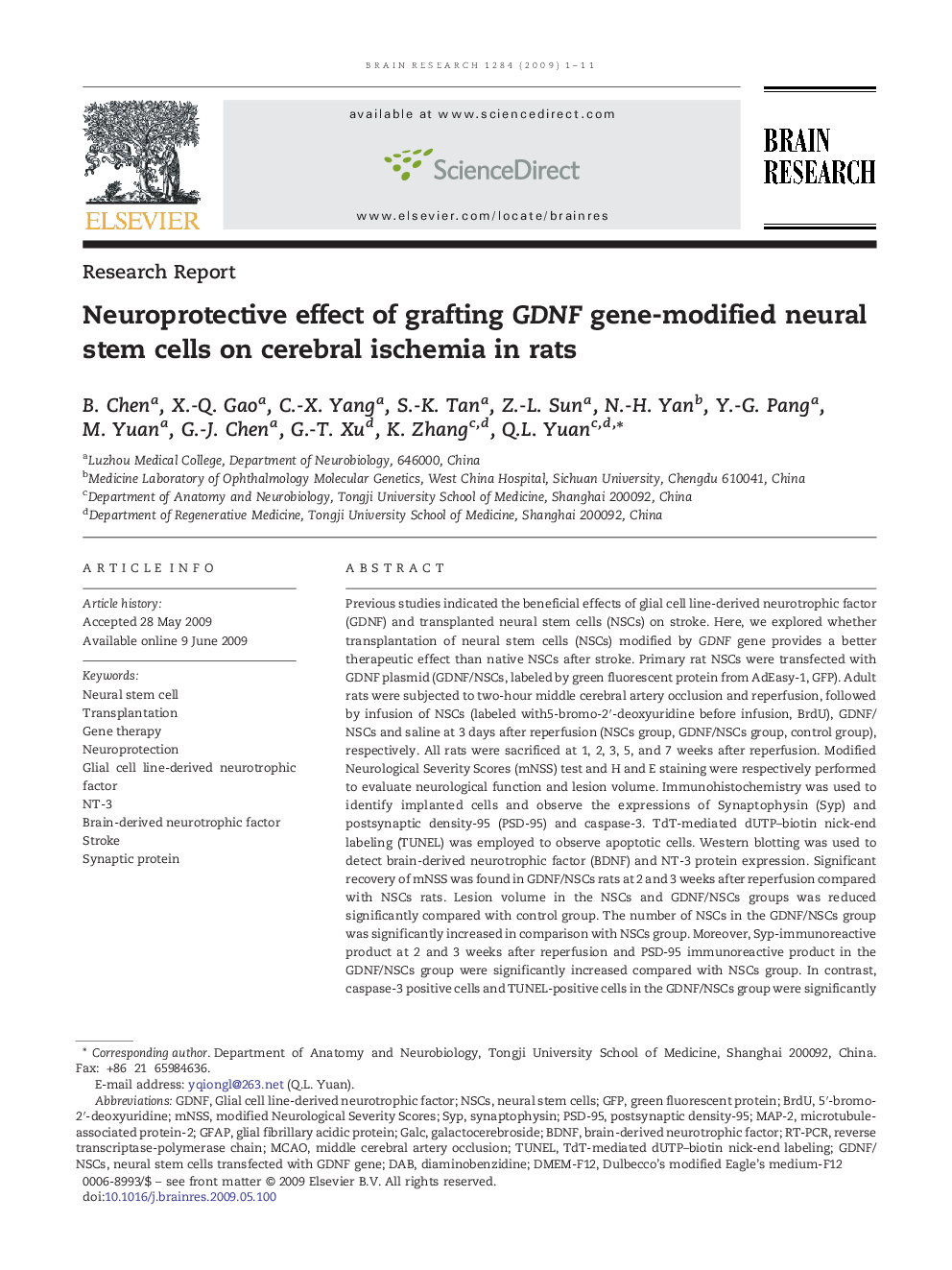| Article ID | Journal | Published Year | Pages | File Type |
|---|---|---|---|---|
| 4328103 | Brain Research | 2009 | 11 Pages |
Previous studies indicated the beneficial effects of glial cell line-derived neurotrophic factor (GDNF) and transplanted neural stem cells (NSCs) on stroke. Here, we explored whether transplantation of neural stem cells (NSCs) modified by GDNF gene provides a better therapeutic effect than native NSCs after stroke. Primary rat NSCs were transfected with GDNF plasmid (GDNF/NSCs, labeled by green fluorescent protein from AdEasy-1, GFP). Adult rats were subjected to two-hour middle cerebral artery occlusion and reperfusion, followed by infusion of NSCs (labeled with5-bromo-2′-deoxyuridine before infusion, BrdU), GDNF/NSCs and saline at 3 days after reperfusion (NSCs group, GDNF/NSCs group, control group), respectively. All rats were sacrificed at 1, 2, 3, 5, and 7 weeks after reperfusion. Modified Neurological Severity Scores (mNSS) test and H and E staining were respectively performed to evaluate neurological function and lesion volume. Immunohistochemistry was used to identify implanted cells and observe the expressions of Synaptophysin (Syp) and postsynaptic density-95 (PSD-95) and caspase-3. TdT-mediated dUTP–biotin nick-end labeling (TUNEL) was employed to observe apoptotic cells. Western blotting was used to detect brain-derived neurotrophic factor (BDNF) and NT-3 protein expression. Significant recovery of mNSS was found in GDNF/NSCs rats at 2 and 3 weeks after reperfusion compared with NSCs rats. Lesion volume in the NSCs and GDNF/NSCs groups was reduced significantly compared with control group. The number of NSCs in the GDNF/NSCs group was significantly increased in comparison with NSCs group. Moreover, Syp-immunoreactive product at 2 and 3 weeks after reperfusion and PSD-95 immunoreactive product in the GDNF/NSCs group were significantly increased compared with NSCs group. In contrast, caspase-3 positive cells and TUNEL-positive cells in the GDNF/NSCs group were significantly decreased compared with NSCs group. Significant increase of BDNF protein in the GDNF/NSCs and NSCs groups was observed compared to the control group at different time points of reperfusion, and GDNF/NSCs grafting significantly increased BDNF protein expression compared to NSCs grafting. In addition, significant increase of NT-3 protein in GDNF/NSCs and NSCs groups was detected only at 1 week of reperfusion compared to control group. The results demonstrate that grafting NSCs modified by GDNF gene provides better neuroprotection for stroke than NSCs grafting alone.
